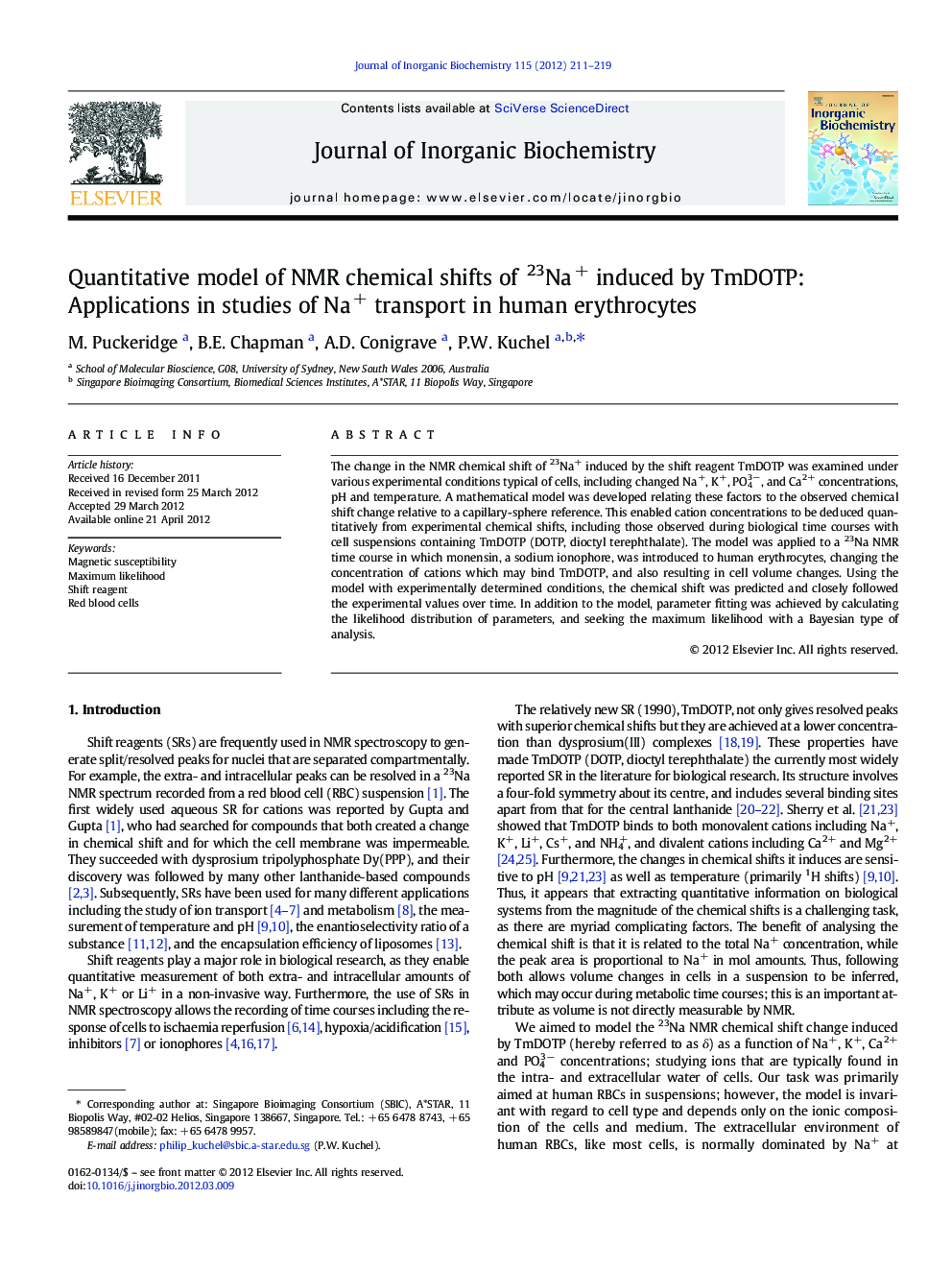| Article ID | Journal | Published Year | Pages | File Type |
|---|---|---|---|---|
| 1316396 | Journal of Inorganic Biochemistry | 2012 | 9 Pages |
The change in the NMR chemical shift of 23Na+ induced by the shift reagent TmDOTP was examined under various experimental conditions typical of cells, including changed Na+, K+, PO43−, and Ca2+ concentrations, pH and temperature. A mathematical model was developed relating these factors to the observed chemical shift change relative to a capillary-sphere reference. This enabled cation concentrations to be deduced quantitatively from experimental chemical shifts, including those observed during biological time courses with cell suspensions containing TmDOTP (DOTP, dioctyl terephthalate). The model was applied to a 23Na NMR time course in which monensin, a sodium ionophore, was introduced to human erythrocytes, changing the concentration of cations which may bind TmDOTP, and also resulting in cell volume changes. Using the model with experimentally determined conditions, the chemical shift was predicted and closely followed the experimental values over time. In addition to the model, parameter fitting was achieved by calculating the likelihood distribution of parameters, and seeking the maximum likelihood with a Bayesian type of analysis.
Graphical abstractThe NMR shift reagent TmDOTP binds to many mono- and divalent cations that are typically found in cells. Our model quantitatively predicts the 23Na NMR chemical shifts of 23Na+ in the presence of TmDOTP for known mixtures of cations.Figure optionsDownload full-size imageDownload as PowerPoint slideHighlights► Effect on 23Na NMR chemical shift by TmDOTP with various cations. ► A quantitative model was composed that to simulate experimental chemical shifts. ► Mean parameter values were estimated using a probability-distribution approach. ► The model was applied to an experimental time-course involving red blood cells.
